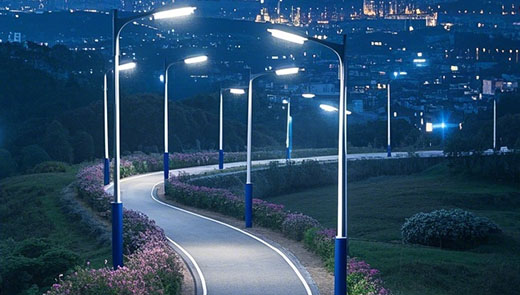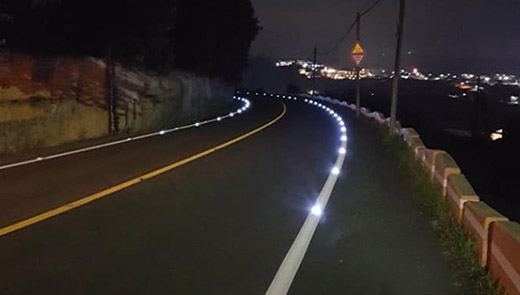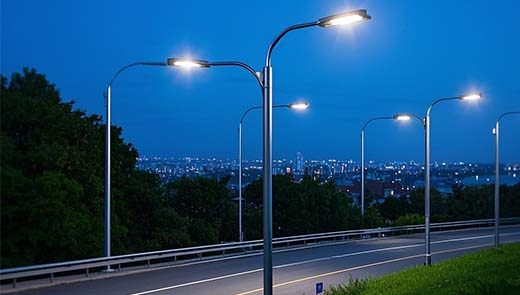How Long Do Solar Street Light Last?
In the context of global advocacy of green environmental protection and sustainable development, solar street lights, as a kind of energy efficient and environmentally friendly lighting facilities, are more and more appearing in the city streets, countryside paths and all kinds of public places. They rely on inexhaustible solar energy resources, for our night travel to bring light, while reducing the dependence on traditional energy sources. However, many people have a question in mind: how long is the service life of solar street lights? Next, let's explore this issue in depth.
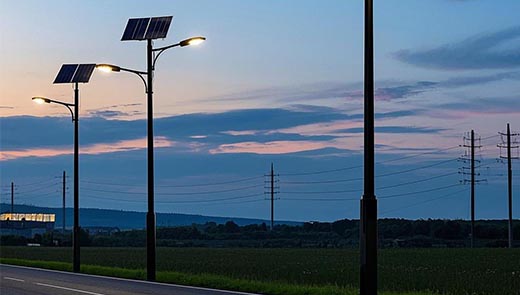
What is solar street light?
Solar street light, from the name can roughly understand its working principle. It is mainly composed of solar panels, batteries, controllers, light sources and poles. During the day, the solar panel is like a diligent “sunlight collector”, converting sunlight into electricity and storing this electricity in the battery. At night, the controller will release the electricity in the battery according to the preset program to drive the light source to glow and illuminate the surrounding roads. The whole process does not require external power grids, relying entirely on solar energy to run, both environmentally friendly and convenient.
The service life of each component of solar street light
Solar panel
Solar panel is called the “power generation heart” of solar street light, and its service life is quite considerable. Usually, the service life of solar panels produced by regular manufacturers is more than 20 years. Even though after 20 years of use, the panel will experience a certain degree of photo degradation, and the power generation may drop by 30% or even more, it can still continue to work. Below are the changes in the performance of solar panels over different years of use:
|
Years of Use |
Performance Change |
|
0-10 years |
Stable performance, power generation efficiency remains high. |
|
10-20 years |
Gradual photo degradation, power generation efficiency decreases slowly. |
|
20+years |
Significant photo degradation, power generation efficiency decreases by about 30% or more, but still usable. |
Controller
Controller plays the role of “intelligent housekeeper” in the solar street light system, responsible for coordinating the work of each component. Generally speaking, the service life of the controller is about 8 to 10 years. However, its actual life will be affected by the quality of electronic components and the use of the environment. If it is used in a harsh environment, such as high temperature, high humidity or strong electromagnetic interference, the controller's life may be shortened.
Battery
The battery is the “warehouse” for storing electricity in the solar street light. In the past, solar streetlights commonly used lead-acid gel batteries, which have a short service life of about 3 years. With the increase of service life, near the end of life, the lead-acid battery will be seriously aging and the battery capacity will drop dramatically, and may not even reach 10% of the initial capacity, which basically can't meet the lighting demand of the street light.Nowadays, most of the solar street lights start to use lithium batteries. Lithium batteries have many advantages over lead-acid batteries, it has better high and low temperature resistance, more charge and discharge cycles, the number of deep discharge can reach more than 2000 times. Therefore, the service life of lithium batteries can exceed 5 years. The following is a comparison between lead-acid gel batteries and lithium batteries:
|
Battery Type |
Service Life |
High & Low Temperature Performance |
Charge & Discharge Cycle Times |
Deep Discharge Times |
|
Lead-acid Gel Battery |
Approx. 3 years |
Worse |
Less |
Less, generally lower than lithium batteries |
|
Lithium Batteries |
More than 5 years |
Better |
More |
More than 2000 cycles |
Light source
The common light source for solar street lights is LED lights. The life span of high quality LED light source can be more than 11 years. LED light source has the advantages of high luminous efficiency, low energy consumption and long life span, which is very suitable for solar street light that requires high energy saving and life span.
Lamp pole
As the“spine”supporting the whole solar street light system, the service life of the light pole is not short. If hot-dip galvanizing process is adopted and good anti-rust measures are taken, the service life of the light pole can exceed 20 years. In contrast, a cold galvanized light pole may rust after 1 - 2 months of outdoor use, and there are certain safety hazards for long-term use.
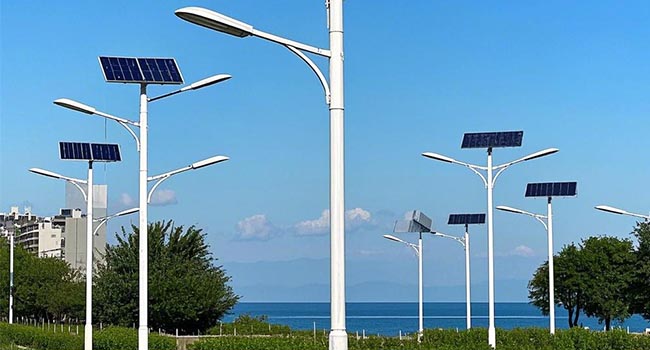
Overall service life of solar street light
From a comprehensive point of view, among the various components of solar street light, the battery is the main factor limiting its overall service life. Under normal circumstances, the overall service life of solar street lights is about 5 to 8 years. However, within this time frame, most of the other components can be used normally, except for the battery, which may need to be replaced. As long as the street light is regularly maintained and serviced, and aging batteries are replaced in a timely manner, the solar street light will continue to provide us with lighting services.
How long do solar street light stay lit?
A solar street light usually illuminates for 8 to 12 hours at night. The meticulous design behind this lies in its daytime operation. During the day, the highly efficient solar panels of the street light actively soak up sunlight. They convert this solar energy into electrical energy, which is then efficiently stored in the batteries. This stored energy is precisely calculated to meet the lighting requirements for a substantial part of the night.Considering the unpredictability of weather, like extended cloudy and rainy spells, larger capacity batteries are installed. These batteries are engineered to accumulate and retain more energy. For example, in regions prone to frequent overcast days, this setup ensures that even if there are 3 to 5 consecutive days of such weather, the solar street light can still function smoothly, continuously providing reliable lighting for the road.
Why are my LED solar street light not lasting long?
Solar lights may not stay on as long as expected for a number of reasons. First and foremost, dirty solar panels can significantly reduce the amount of sunlight they absorb. Solar panels are designed to capture photons from the sun and convert them into electrical energy. However, when they are covered in a layer of dust, dirt, or debris, this crucial process is hindered. For example, in a busy urban area where there is a lot of construction nearby, solar panels on street lights can quickly accumulate dust particles carried by the wind. If the solar panels are not regularly cleaned, the accumulated grime acts as a barrier, preventing a substantial amount of sunlight from reaching the panel's surface. As a result, the amount of electricity generated is reduced, leading to shorter illumination times.
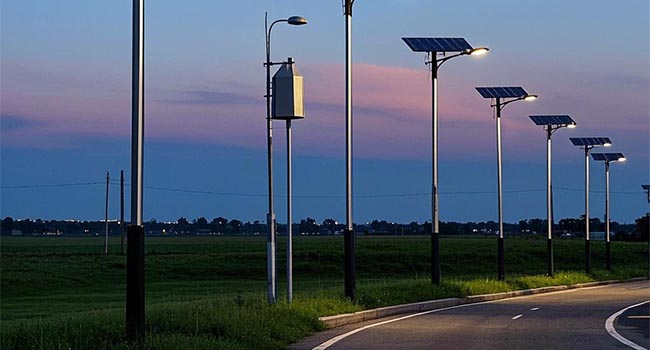
Battery drain is another prevalent issue. Rechargeable batteries, which store the energy collected by the solar panels, typically have a lifespan of about 2 - 5 years. Over time, with repeated charge-discharge cycles, the battery's capacity gradually diminishes. For instance, in a residential garden where solar - powered path lights are used, after a few years of continuous use, the homeowner may notice that the lights no longer shine as brightly as they used to or that they turn off much earlier in the night. This is a clear indication that the battery is losing its ability to hold a charge, and it may be time to replace the batteries.
Placement of solar lights is equally crucial. These lights rely on abundant sunlight to fully recharge. If they are positioned in shaded areas, such as under large trees with thick foliage or near tall buildings that cast long shadows, they will not receive an adequate amount of sunlight. Consider a solar - powered security light installed on the side of a house that faces a tall fence. The fence may block the sunlight for a significant part of the day, causing the light to charge insufficiently. To ensure optimal performance, it is essential to check if there are any obstructions like trees or buildings casting shadows over the solar lights and adjust their position accordingly to maximize sunlight exposure.
How to extend the life of solar street light
Choose high-quality solar panels
When buying solar street lights, make sure to choose solar panels made by regular manufacturers with guaranteed quality. The products of regular manufacturers are more stringent in the production process, material selection and other aspects, which can ensure that the panel has a longer service life and stable power generation performance. Do not choose some low-quality products for the sake of cheapness, or it may lead to premature damage to the panel, increasing the maintenance costs later.
Choose a light source with good heat dissipation
During the working process of solar street light, the lamp head and battery will produce heat. If the heat can not be emitted in time, it will affect the life of the LED beads and batteries. Therefore, choose LED light head with good heat dissipation function. High-quality LED light head usually adopts special heat dissipation design, which can quickly dissipate the heat into the surrounding environment and effectively prolong the service life of LED beads.
Select high-quality batteries
The importance of batteries for solar street lights cannot be overstated. In order to extend the service life of the street light, it is recommended to choose A-grade LiFePO4 lithium batteries, which are made of aluminum-magnesium alloy shell and have the advantages of fast heat dissipation, long service life and reliable quality. In cold seasons or areas with high requirements on the service life of streetlights, low temperature constant current technology can also be considered to minimize the impact of low temperature on the performance of the battery.
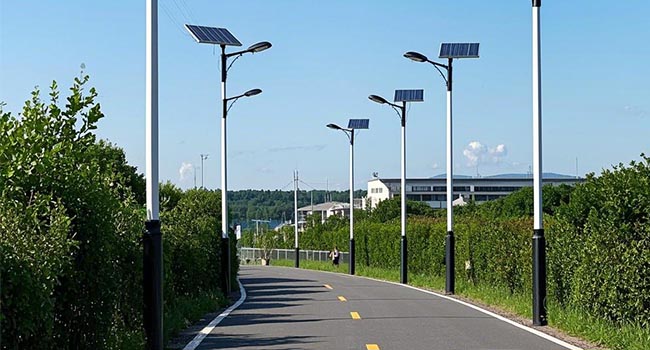
Equipped with suitable solar street light controller
Controller is one of the core components of solar street light system, and its quality is directly related to the stability and reliability of the whole system. Don't choose inexpensive controllers in order to save costs, but choose qualified products produced by reputable manufacturers. A quality controller can precisely control the charging and discharging process of the battery, protect the battery from damage caused by overcharging and over discharging, thus prolonging the service life of the battery.
Focus on the choice of light pole type
The quality and service life of the light pole will also affect the overall performance of the solar street light. Hot-dip galvanized light poles have good anti-rust properties and can last for more than 20 years. Cold galvanized light poles are prone to rust, which not only affects the aesthetics, but also may have potential safety hazards. Therefore, when choosing light poles, give priority to hot-dip galvanized light poles to ensure that the street lights can work stably for a long time.
As an environmentally friendly and energy-saving lighting solution, solar street lights play an increasingly important role in modern society. Understanding the service life of solar street lights and the factors affecting their life span is crucial for us to reasonably select, install and maintain solar street lights. By choosing high-quality components, proper installation and regular maintenance, we can effectively extend the service life of solar street lights, give full play to their energy-saving and environmentally friendly advantages, and bring more convenience and light to our lives. In the future, with the continuous progress of technology, we believe that the performance and service life of solar street lights will be further improved, and make greater contribution to the development of promoting the cause of green lighting.

